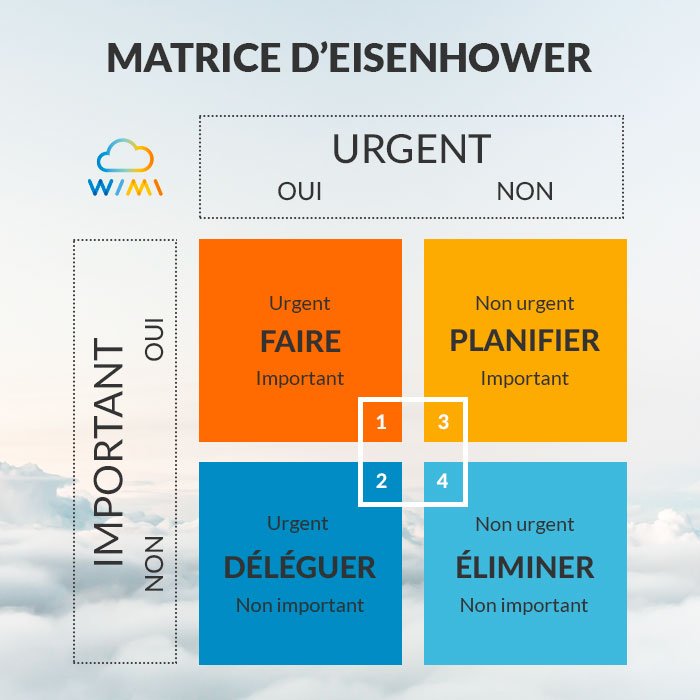Prioritising your tasks at work is essential, but it’s still hard to do that correctly. So, you easily feel unproductive, struggle to pace your work and therefore end up taking extra hours to finish your tasks.
Moreover, not only does being unproductive affect the quality of your work, but it also greatly affects your health. You might feel constantly nervous, stressed and anxious. It’s definitely worth finding a quick solution before you burn out.
It may reassure you to know that there’re several tools to help you prioritise your tasks according to their importance and urgency, such as the Eisenhower matrix, one of the best-known and most-efficient methods.
The Origin of the Eisenhower Method
As the name suggests, the matrix was invented by Dwight David Eisenhower, the 34th President of the United States, who was in charge from 1953 to 1962. Throughout his two terms, he greatly contributed to the advancement of his country. More notably, he developed the motorway network in-between states, he started the “space race” by founding NASA and developed nuclear weapons during the Cold War.
Ike, as people used to call Eisenhower, was both a military man and a politician, which required him to be extremely careful in choosing the tasks he was expected to accomplish every day. This is how the matrix was invented in the first place, an exceptionally helpful method to determine the urgency and importance of every task. It’s specifically thanks to this tool that throughout his entire career he maintained such a high level of productivity.
The Principle
“What is important is seldom urgent and what is urgent is seldom important” – Dwight David Eisenhower
The Eisenhower method helps you prioritise your tasks and boost your productivity. It’s a tool that enables you to analyse and classify the tasks you need to accomplish according to their importance and urgency.
- Vertical axis: importance of the tasks
- Horizontal axis: urgency of the tasks

You can also organise your tasks in four different sections:
- Tasks that are both important and urgent;
- Tasks that are not important but urgent;
- Tasks that are important but not urgent;
- Tasks that are neither important nor urgent.
However, you might be wondering: how can you tell which tasks are important and which are urgent?
The important ones are vital to progress towards your objectives and bring added value to your projects. The urgent tasks, on the other hand, need to be dealt with promptly, even though they usually don’t concern your project but someone else’s. For example, you might have to reply to an email or a phone call, join a meeting that doesn’t concern you directly, etc.
The Eisenhower matrix helps you prioritise the important on the urgent:
- Important and urgent tasks (section 1) are the priority – they need to be dealt with straight away;
- Unimportant but urgent tasks (section 2) need to be delegated;
- Important but non-urgent tasks (section 3) need to be integrated in your planning and dealt with quite rapidly;
- Unimportant and non-urgent tasks (section 4) are useless and constitute a waste of time – they need to be taken off your list!
If the tasks in section 1 are not carried out straight away, they can have bad consequences on your project and your career.
By delegating tasks that are unimportant but urgent and by getting rid of the unimportant and non-urgent, you’ll have more time to focus on urgent and important tasks.
As for the tasks in section 2, they are necessary to achieve your long-term goals, such as obtain a new qualification to progress professionally or develop a new strategy for your company. Therefore, you want to invest on them as much time as you can. You’ll then have the feeling of being productive and progress towards your goals.
Advantages and Disadvantages of the Eisenhower matrix
The greatest advantage of this method is that it can be applied to both your professional and personal life. It will allow you to better manage your time, organising effectively your work prioritising tasks and therefore becoming more productive. It also facilitates the decision-making as well as the delegation process.
Moreover, the fact of listing your tasks allows you to be more realistic, step back and look at the bigger picture.
Initially, it might seem very time-consuming to separate what is important from what isn’t. Before starting a task, always ask yourself if you’re doing it because it’s important or because it’s urgent. With a bit of practice, you will get to see the difference more easily and you will realise that this method is actually vital to improve your daily productivity.
To help yourself manage your work, bear in mind that importance is a choice, whilst urgency is a matter of time.
Some tips to help you better manage your time
Here are some tips to use your time more effectively and become more productive:
- Avoid listing more than 8 tasks for section. Your objective is accomplishing tasks, not piling them up;
- Don’t let anyone decide what your priorities are;
- Plan your tasks from the morning and work towards your daily goals one task at a time;
- Help yourself with tools such as the Eisenhower method or pieces of software such as Wimi.
This tool will help you maintain a long-term organised routine.
Remember, urgent and/or important… that is the question!










